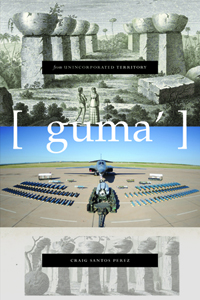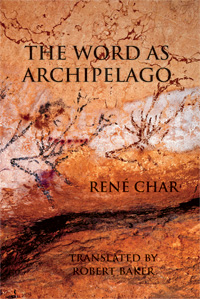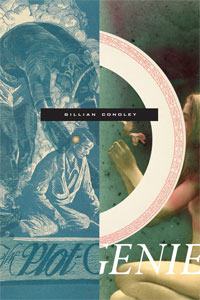Description
Craig Santos Perez, a native Chamoru born and raised on the Pacific Island of Guåhan (Guam), migrated with his family to California in 1995, and does not return home until fifteen years later. from unincorporated territory [guma’] emerges from the tension between arrival and departure to map the emotional and geographic cartographies of migration. Featuring a variety of poetic forms (including lyric, narrative, documentary, and conceptual poems, dramatic monologues, and prose essays), the poet highlights the everyday struggles of staying connected to native origins and customs, while adjusting to new American cultures and terrains. Furthermore, this collection draws attention to, and protests, the violent currents of colonialism and militarism currently threatening Guåhan, a US territory since 1898 and a “strategic” location of US geopolitical power in the Asia Pacific region. Drawing from history and politics, culture and family, from unincorporated territory [guma’] memorializes what the Chamoru people have lost through military occupation and out-migration, and insists that we must raise our voices to protect and defend what we have left of the places we call home.
Winner of the 2015 American Book Award in Poetry
One of Library Journal‘s Best Books of 2014
One of Book Thug’s Best Reads 2014
Listed by Library Journal‘s Barbara Hoffert as a key title of April 2014:
Though he’s a native Chamoru from the Pacific Island of Guahan (Guam), Perez has not lived there for two decades. He uses a range of arresting techniques, including presenting excerpts from official documents with interlinear commentary, to show the cost of historical and ongoing U.S. militarism and colonization on the island. From the winner of the 2011 PEN Center USA Literary Poetry Award.
Craig Santos Perez is quite simply writing some of the most significant poetry of the early 21st century. Employing struck-through lists of dead soldiers, fractured diary entries on a return to Guam or shoplifting Vienna Sausages, public comments from Draft Environmental Impact Statements, and searing poems of brevity and heart, Perez is re-mapping a post-colonial America, one pitch-perfect syllable at a time.
Mark Nowak, author of Coal Mountain Elementary
The navigation strategies of this writing trouble the water and, in so doing, conjure officially unincorporated territory into a new and decidedly unofficial being, one vocal, trans-oceanic, multiple, and searching. Song—“to sing/ forward…to/ sing past”—is part of the superflux; so, necessarily, is the corporeal—“my body these excerpts.” And in these pages the conjuration, Craig Santos-Perez’s appeal, his long-term accounting of what “the meaning of Guam” might be, continues on magnificently.
C. S. Giscombe , author of Prairie Style
The industrial militarization of Guam clearly did not assess Chamoru poet resiliency in the long-term feasibility analysis. Here, in guma, we enter the waving imbrications in remarkable keyhole clarity, fitted to resist propelling and plummeting with each intended subdual, each Spam infused recruit, each distraught dislocation until we are fulsomely brought to that tiny dot and realize the centripetal force was here all along. Every line here is a bit of incantatory embrace, flush with complex and sincere measure, this, the poet’s song and we are graced with it. An amazing volume, give Craig Santos Perez all the prizes. He’s earned them.
Allison Adelle Hedge Coke, author of Blood Run
This latest of Craig Santos Perez’s poetic series, from unincorporated territory [guma’], interrogates what “home” means when you are ancestrally and genealogically from an island and a people who are occupied and militarized to further American empire, when you and your family are forced to leave your island out of economic necessity, when you return to find your island so brutally changed to be nearly unrecognizable. With searing and brave honesty, Perez lays bare colonialism and its devastating injustices, while his fierce love for his people and island stand strong as the latte stones of his Chamoru ancestors. You can’t look at Guåhan, the American-occupied Pacific, nor the United States the same after reading these pages. Free Guåhan and Hawai?i!
Brandy N?lani McDougall, author of The Salt-Wind, Ka Makani Pa?akai
About the Author
Reviews
Excerpt
Craig Santos Perez is a native Chamoru from the Pacific Island of Guåhan/Guam. He is the co-founder of Ala Press, co-star of the poetry album Undercurrent (Hawai’i Dub Machine, 2011), and author of two collections of poetry: from unincorporated territory [hacha] (Tinfish Press, 2008) and from unincorporated territory [saina] (Omnidawn Publishing, 2010), a finalist for the LA Times 2010 Book Prize for Poetry and the winner of the 2011 PEN Center USA Literary Award for Poetry. He is an Assistant Professor in the English Department at the University of Hawai’i, Manoa, where he teaches Pacific literature and creative writing. He lives in Honolulu. Find more about him here: craigsantosperez.wordpress.com/about-2
A brief interview with Craig Santos Perez
(conducted by Rusty Morrison)
It’s very exciting for me to see the 3rd installment of from unincorporated territory come to fruition. Each book is complete in itself, yet each certainly echoes the other two collections. Can you speak to the ways that guma’ is unique, and the ways that it enlarges the project that these three books are a part of?
The first book of the series, from unincorporated territory [hacha] (2008) focused on my grandfather’s life and experience on our home island of Guåhan (Guam) when the island was occupied by Japan’s military during World War II. The second book, from unincorporated territory [saina] (2010), focused on my grandmother’s contrasting experience during that same period. This new book echoes and enlarges the earlier books through the themes of family, militarization, cultural identity, migration, and colonialism. Furthermore, [guma’] focuses on my own return to my home island after living away (in California) for fifteen years. I explore how the island has changed and how my idea of home has changed. I also meditate upon the memories that I have carried with me, as well as all that I have forgotten and left behind. Formally, I experiment with new forms and genres in [guma’], such as prose poetry, eco-poetics, conceptual poetry, indigenous oral poetry, and mythological poetry.
As this book is focused upon ‘home’, it’s not surprising that ‘language’ is very much as stake, since one’s language is so inextricably integrated into a sense of one’s borders and belonging. I have two questions about this, but you may have much more to say.
my questions:
a) Can you speak to the purposes and the potential gifts to the reader that come from incorporating your primary language in this text?
They say that the Chamorro language is the umbilical cord of our culture because it is an importance source of custom, values, knowledge, wisdom, history, identity, and memory. Sadly, colonialism has severed this cord by suppressing our native language and forcing my people to learn English, which has pushed Chamorro language to the brink of extinction. The presence of Chamorro language in my work reflects its fragmented persistence in my own life. This presence is gift and inheritance, struggle and resistance. While other native writers have the ability to wield their languages as sophisticated weapons against the colonizer, my incomplete fluency is more akin to throwing stones.
b) And can you speak to your use of italics phrases, which seem to act as an alternative language, or subliminal languaging, or an otherness that interrupts or echoes or questions the flow of the text in these sections?
I imagine that there is a network of underground caves that connects each page of the book, through which the voice of water flows and interweaves. These italicized voices rise to the surface at different moments to sublimate, interrupt, cross current, and interweave the tidal flow of the narrative. They remind us of the porous nature of storytelling, and the deeper ecology of language and memory.
There are so many recurring and formally very different series in this text. Of course, in a short interview, we can’t discuss them all. But I’ll ask about two of the series:
a) Can you say how Juan Malo came to you as a character to bring to this text?
Juan Malo is a famous character in Chamorro storytelling: he is a young Chamorro man who lived on Guåhan during Spanish Colonial times. He is most commonly known as a “trickster” who—with the help of his trusty karabao (water buffalo)—humorously outwits the Spanish Governor (the figure of colonial power). I love the Juan Malo stories because they show that even powerless people can subvert and resist colonialism in creative ways, which to me suggests a parallel between trickster stories and contemporary decolonial literature.
b) Bringing the DEIS into the text makes me think of Rukyeser’s work–how her use of actual testimony creates a timeless and profound poetry. What were your challenges in engaging with actual testimony?
While I was writing [guma’], the nine-volume, 11,000-page Draft Environmental Impact Statement for the military buildup on Guam was released. At that point, the public had 90 days to read, understand, and respond to a plan that would use a sacred latte village as a live firing range, destroy thousands of acres of coral reef to dredge a harbor to house nuclear aircraft carriers, and transfer tens of thousands of soldiers and their dependents to Guam, causing a population spike that would overwhelm public utilities and services. Reading the DEIS felt like reading the roadmap to the destruction of my homeland.
After the comment period, a new Final Environmental Impact Statement was published and included a tenth volume, which presented the testimonies that were submitted by the public, a majority of which opposed the military buildup. So I started to re-post some of the most poignant comments as my Facebook status, as a way to re-circulate these testimonies in another sphere. Some Facebook friends even shared these status updates. In [guma’], I cast these testimonies as poems, including some of the comments I received on Facebook. Even though these are actual comments, I wanted to include them in my book of poems because reading our resistant voices feels like reading poetry.
Would you tell me a bit about yourself? anything about you that is not in the bio printed in the book, and that might give insight into your more personal relationship to this text?
While writing several food poems for [guma’], I began to become more conscious about the relationship between colonialism and food. Like many other Pacific Islanders today, I was raised on imported foods from America (such as white rice, white bread, SPAM and other canned meats) and Asia (such as soy sauce, shrimp chips, candies like Pocky and Hello Panda, and bottled teas). These unhealthy, colonial foods have ravaged the Pacific body, causing high rates of chronic diseases linked to poor diet. Today, I am trying to “decolonize my diet” by returning to native and local foods and supporting the “food sovereignty” and “food security” movements in Hawai’i. I am even working on a creative nonfiction book called “The Decolonial Diet.”
Who are the authors with whom you feel a kinship? who are you reading currently?
I feel a kinship with all writers who believe that poetry can heal, empower, inspire, educate, critique, entertain, dignify, memorialize, transform, and renew. I am currently reading writers that I am teaching in my Contemporary Pacific Poetry and Poetics graduate course. If you contact me on Facebook, I will happily email you a reading list.
The cover of from unincorporated territory [guma’] is a split design. In that way, it is similar to the cover of [saina]. but this design actually uses three images, not two. You were seeking a modern image of Guam, impacted by the military for part of the design. And, you chose the archival image that is used, both at the top and as an insert into the bottom of the design. Can you talk about your relationship to these images, and your reasons for your choice?
The archival image on the top of the cover is a drawing titled “Ancient Ruins of Columns Seen on the Island of Tinian.” Jacques Arago drew this image for French navigator Louis Freycinet’s book Voyage Autour de Monde, or Voyage around the World, published in Paris in 1824. Tinian is an island north of Guåhan, both of which are part of the Mariana Archipelago, the ancestral islands of the Chamorro people. While most of my writing is about Guåhan, I chose this picture of Tinian to point to the fact that our archipelago is now partitioned into two political entities: the US unincorporated territory of Guam and the Commonwealth of the Northern Mariana Islands. Using this image represents, to me, a dream of freedom and re-unification.
The “columns” in the image are known as “latte” stones in Chamorro, a two-tiered stone structure that formed the foundations of our ancestral houses, atop of which were placed A-frame wood and thatch structures. These raised dwelling spaces functioned as homes, schools, and ceremonial structures, as well as canoe and food sheds. During Spanish colonial times, the colonizers burned down the dwelling spaces, pushed over the latte stones, and moved the people into Spanish style mission housing.
Many of these latte site ruins still exist throughout our islands, and my people believe that they are sacred spaces in which our ancestors’ spirits dwell. The image of the latte stone is also very symbolic to us: it represents the foundation of our culture and the strength and ingenuity of our people. At the same time, it also represents a deep sense of trauma and loss.
The middle image of the cover (found by book designer Cassandra Smith) is a photograph of the 27th Expeditionary Fighter Squadron at Anderson Air Force Base, a 20,000-acre military base located on the northern end of Guam that houses thousands of military personnel and their dependents in around 1,200 housing units. Anderson AFB, established in 1944, was a major staging area during the Vietnam War and continues to be a strategic forward bomber operation base. Decades of military activities led to dangerous amounts of herbicide, pesticide, and other toxic and hazardous material contamination of the groundwater and soil. Notably, Anderson AFB overlies the Northern Guam Lens, a sole-source aquifer that provides the majority of Guam’s drinking water.
The final image is also of latte stones, but the image is faded–faded beneath the pavement of the military base, beneath the boots of the soldiers. To me, this represents how militarization and colonialism has attempted to bury and destroy our homes and cultural integrity; at the same time, the overall design of the cover represents the continued survival, breath, and strength of the Chamorro people.
From the Pacific Island of Guåhan (Guam), PEN Center USA Literary Award winner Perez incorporates reportage, environmental impact statements, struck-through lists of dead soldiers, bursts of impressionistic verse, and diarylike writing fractured by italicized commentary (“My family migrated removed from Guåhan [we] have to California in 1995”) to show how his homeland has been shattered by war and colonization. The result should be tricky to read, but it’s mesmerizing.
By turns cultural and ecological artifact, personal narrative, body count, and colonial (and resistance) document, Perez’s third collection advances a disturbing, fractured narrative using an impressively wide swath of poetic forms and techniques: prose sections are interrupted by domestic and patriotic language, interweaving the Japanese and American captures of Guam (the author’s birthplace) with the narrator’s personal history and the current wars in the Middle East: “My grandpa o saina struggles to tell his story. The US passed the Guam Meritorious Claims act… His eyes become saltmemories thread fathoms of water. He looks at his empty hands to pledge allegiance.”
If the latte provides Perez with a form for [gumá], the Chamorro practice of “throw-net” fishing provides Perez with method—a process that interweaves texts, bringing together multiple voices and sources. The reader is left with the task of choosing how to read the braiding strands. In fact, the braided italic words serve many different rhetorical functions throughout the poems—as translation, as
appositive, as interjection, as knowing aside, as spiritual call and response. Also many of the italic lines come from Perez’s earlier books, so it is as if the texts were textiles— each line possessing the potential to be reused and rewoven within any given (or ginen) poem.
His forms play with polyvocality, mixing languages and splicing commentary and chorus-like voicing into histories. These documentary works (with public statements, geographical notes, raw science, quotation and collected anecdote) are beautiful and personal, even at their most journalistic, as they weave the author’s private genealogy with the exploration of a place with untranslatable bits of language and uncirculated archive.
In Perez’s poetry we delve into that history, seeing pieces with new eyes, to see past that dependency, where the maps don’t take us back to the Pentagon, don’t take us back to the Vatican, don’t take us back to Magellan. It is important however not to conceive of these decolonial maps as being time traveling endeavors. They are meant to take us into the future, not the past.
ginen tidelands [latte stone park] [hagåtña, guåhan]
~
—Cecilia C. T. Perez from “Signs of Being: A Chamoru Spiritual Journey” (1997)
~
i haligi
a pillar
i tasa
a capstone
i tataotao
a body
~
his hands—
husk coconut—
cooks and
feeds [us]—
stories—this
raised house—
~
at quarry
outline forms
to sing
forward—carve
limestone to
sing past—
~
citizen : drafted
vietnam war—
the rifle
he kept—
his uniform
his fatigue
~
soak coconut
fibers—dry
under sun—
“make rope”
braided hair—
“like this”
~
hålla haligi—
pull sky—
hålla tasa—
“pull, son”
with [our] entire breath
~
[our] bones
acho’ latte
removed from—
to museum
of trespass—
to here—



